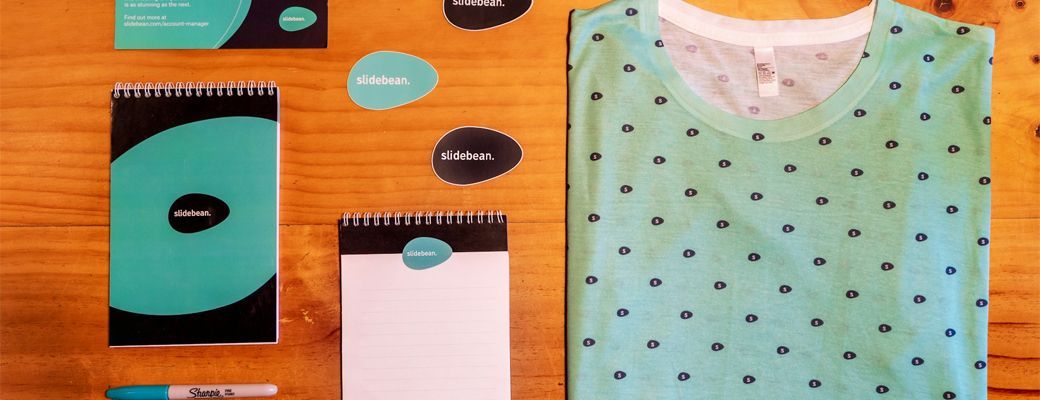Have you ever wondered how some brands become household names without breaking the bank? In today's competitive world, building a strong brand can seem like a mountain to climb, especially when you're working with a tight budget. But what if you could create a memorable brand with a limited budget? With creativity and the right strategies, your customers will recognise and trust your brand, all while spending wisely.
This blog will show you that it's not only possible but also practical to build a robust brand with limited resources. Get ready to discover the secrets to effective, budget-friendly branding and see how you can make a big impact without a big spend.
What is a Brand and why does branding matter?
A brand includes more than a mere logo or fancy name. According to Jeff Bezos, the founder of Amazon, “Your brand is what others say while you're not present”. A brand is what people think and feel about your company. It can be anything—your company's core values, commitment, trust you build and the promises you make to your customers. A strong and resonating brand helps customers remember your company and trust it. People who trust your brand will likely become consumers of your product or services.
Think of Apple. What comes to your mind when you think of Apple’s logo? Indeed, Apple has high-quality, never-compromised innovative products. These products reflect a strong branding strategy Apple built over the years.
When Nike announced its slogan “Just Do It”, it gathered people's attention. Today, it inspires people and makes them feel connected. And, this has led to “customer loyalty”.
How Much Money Do You Need to Build a Brand?
You need a budget for running a successful brand to create things like custom card wallets. And, the money required varies from brand to brand. It depends on your brand's goals, strategies, products or services. However, starting a brand with little or no money is still possible.
Many popular brands we know today started with a minimal budget. They focused on quality content, customer satisfaction, social media engagement, and word-of-mouth marketing. Initially, laying down your brand's strategy is crucial. As your brand grows and gains some attention, you can invest more in advertising, and other needs. Read further to learn how to build a brand with a limited budget.
Utilise free channels
Free channels are one of the best and most popular ways to promote or advertise your brand without spending much. Here, free channels mean “social media”. It is because half (53%) of the global population uses social media and now, all your customers are available online! Create profile accounts on those sites, find your ideal customers, and start posting regularly. Share your business updates, services, and interesting articles and engage with your followers. By doing this, you're building a strong foundation for your brand without even spending a dime.
Choose a Suitable Social Media Platform
Once you've decided to spread your brand via social media, you must understand that not all platforms are the same. And not all social media platforms suit your brand. You must carefully choose the one that best fits your brand. Choose the one where your ideal customers and target audience are most active.
For example, if you're targeting the youth, Instagram or TikTok is the right choice. LinkedIn is your go-to option if your target audience is business professionals and founders. Focus on the platform where you can impact your customers most. For instance, consider how Nike utilises Instagram to showcase their products and attract the youth community.
Invest in a Research-Backed and Analysis System
Investing in a good research and analysis system is always appreciable, even if you need more money. It'll save your brand and money in the long run. Tools like Google Analytics are worth investing in to understand what works and what doesn't. It gives you a wide view of your brand-building activities and allows you to adjust your strategies based on the results. This way, you can track which post performs well and the best posting time of the day. This helps you in drafting a clear-cut strategy for the best results.
Invest in Priority Areas by Reducing High-Cost Efforts
Focus on areas that give you the most return on investment when you're on a tight budget. This means to cut down unwanted expenses that don't bring much value. For instance, instead of spending huge amounts on advertising, you can spare your time for social media engagement and create content. That's how a most popular company — Dollar Shave Club — created a low-cost video to create a viral marketing campaign, indeed, it brought in thousands of new customers.
Lay Down an Action-Based Strategy
Planning your priorities will prevent you from losses. You need a clean and clear action plan to build a strong brand. Pen down the key strategies to reach your goal. This can include creating a content calendar, scheduling regular meetings with your teammates to review the process, etc… A clear plan helps everyone stay on the right track and ensures that you're moving steadily towards the process.
Partner with Major Brands
Partnering with well-known brands can give a free boost to your brand without costing much. Look for brands that align with your brand values. Reach out to them to see if they would be interested in collaborating or partnering with you. Collaboration includes co-hosting events, sharing and supporting each other’s social media content, and running joint promotions. Collaboration with bigger brands will help you reach a wider audience than usual. For instance, Red Bull & GoPro collaborated to create content showcasing their brands. Other examples are, Nubian Skin & Adobe, Rizos Curls & Microsoft.
Create a Campaign that Spreads on Its Own
Nothing beats a campaign that spreads by word of mouth. Creating such campaigns can be very effective only if you know your target audience. Identify what makes your brand unique and develop a creative aspect to share. This could be a funny challenge, a unique hashtag, or storytelling. Create such campaigns and encourage your audience to participate. The more they share your brand, the faster your brand grows. The best example of such a campaign is “the ALS Ice Bucket Challenge” which gained much traction without breaking the bank.
Think Globally, But Execute Locally
Everyone targets to grow their brand globally. While fitting your brand into the global market is essential, it's also important to consider your local community. It can be achieved by building a strong presence in your local area. Build relationships with local customers, participate in local events, and support local causes. Doing this will spread your brand's message and strengthen your loyal customer base. For example, Starbucks strengthens its brand locally by engaging in local community events.
Best Bonus Tips for Effective Resource Allocation for a Budget-friendly Branding
- Stand for Quality Over Quantity: A few high-quality posts are always better than many low-quality posts. Audiences love value-driven content. It constantly keeps your audience engaged. For example, Patagonia focuses on high-quality content that aligns with its environmental values.
- Start by focusing on core brand identity elements such as your logo, name, and tagline, as these will be widely used. Website design and packaging can be addressed later, allowing you to stage your investments over time.
- Handle some tasks yourself, like creating social media graphics or branded templates, but leave specialised work, such as logo design, to professionals.
- Know where to invest. Spend more on high-impact branding elements like your logo, opting for quality over cheap alternatives. Save on less crucial items, like branded t-shirts, branded toys, branded travel mugs, branded tote bags, branded hoodies, and more.
- Hire freelancers instead of agencies to get quality design work at a lower cost. Platforms like Upwork offer access to experienced and affordable talent.
- Plan for ongoing branding needs, not just initial development. Maintaining brand consistency requires the continual production of branded assets.
- Consider pro bono work from designers looking to build their portfolios. Choose carefully, considering their skills and experience.
Action Plan for Effective Brand Building with a Small Budget (with examples)
Starting with Research
Before you start a brand, do some research. Learn about your target audience. Who are they? What do they like? 70% of people want things that resonate with their needs. To meet their needs, you must know your audience. Creating audience-targeted content will bring an identity to your brand and make it appealing. On the other hand, understanding your competitors and learning their rights and wrongs can be your brand's advantage.
While researching your customers, you must also know their likes, dislikes, needs and wants. Such brands will help you directly speak to them. To gather enough information, you can conduct surveys or talk to potential customers to understand their needs and pain points.
Example: LEGO knows its audience is kids and adults who love building and creativity. They create products and marketing campaigns that appeal to both groups.
Creating a Unique Brand Identity
Your brand identity determines how your business is presented to the world. Brand identity can be your logo, colours, the style of your message and the effectiveness of your brand's voice. Your brand radiates the uniqueness and personality of the brand's identity. Even with a limited budget, you can create an impressive brand identity with creativity.
Consider Amazon. Its logo has a smiley arrow pointing from A to Z, indicating it sells a wide range of products — they sell almost everything! And, Coca-Cola uses red and white consistently in all their branding. This consistency makes their brand easily recognisable.
Utilising Content Marketing
Content marketing refers to creating content useful to the target audience and, therefore, gaining their attention. Publish articles, make videos or post blogs to pass information that is informative to the readers. This also aids towards branding your company as the expert in a specific field and gets the clients to trust your firm. Also, it is crucial to use understandable and comprehensively consistent information for the target audience; in this case, such information will help people remember the brand.
For instance, if your business involves farming and selling gardening equipment, you should write articles on agriculture counselling, looking after plants, and garden-based projects. This demonstrates your knowledge and helps to attract gardening enthusiasts.
Offering Excellent Customer Service
Great customer service can be beneficial to your brand. Razorfish conducted a survey back in 2021, the survey indicated that 82% of customers tend to engage with brands that have a higher cause. Consequently, the ability of brands to assist individuals in becoming better people was affirmed by 66.8% of the consumers. You must be polite, helpful and efficient when dealing with clients. Happy consumers always put the word out for you; that is how you expand your market base without necessarily having to use a lot of cash.
Encourage your customers to leave reviews online. Positive reviews can help build trust and attract new customers. Amazon uses customer reviews extensively to build trust and drive sales.
Using Email Marketing
Email marketing is another cost-effective way to build a brand. Once you have established a good base for your brand, you should consider email marketing as your next step. Collect email addresses from your customers and send them regular updates. Share news, special offers, and useful content. This keeps your brand in their minds and encourages repeat business.
Being Authentic
Authenticity is crucial for building trust. Be honest about what your brand stands for and what it offers. Don’t make promises you can’t keep. Authentic brands create loyal customers who support them even with limited resources.
Build Brand’s Loyalty
A brand builds loyalty by consistently delivering on its promises and creating a positive customer experience. Key ways to build brand loyalty include:
- Quality Products and Services: Make sure your products or services are satisfactory with the expectations of the consumers.
- Consistent Communication: Adequate communication must be achieved by having a standard marketing message and ensuring people can rely on the messages received.
- Engagement: Interact with your customers through social media, email, and other channels to build relationships and show you value their feedback.
Monitoring and Adapting
Keep an eye on how your branding efforts are going. Use tools to track your social media engagement, website traffic, and customer feedback. This helps you understand what’s working and what isn’t. Be ready to adapt your strategies based on the results.
At Promo Store, you can create your branded ballpoint pens, personalised pencils, or even personalised fountain pens for your branding purposes, and I can assure you that you'll save a considerable amount on these items.
Conclusion
Creating a good brand when you have little capital is achievable if well planned for and good strategies are implemented. By identifying who you are marketing to, developing a strong brand, and using cheap marketing strategies, you could design a brand that is different and appealing to the customers. As is often said, in preparing for a journey, keep it consistent, have the patience of a saint and just get better. This means that by hard work you will be rewarded in due time.







